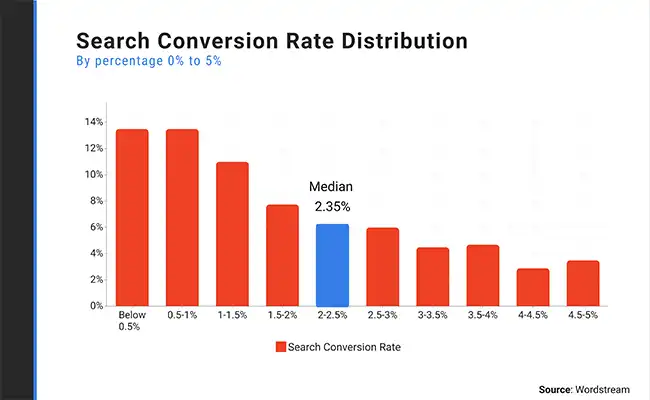Ways To Improve Website Conversion Rate

Everyone who operates a business website shares a common interest which is conversions that’s based on their respective objectives.
Have you every visited a website that didn’t meet your expectations? Maybe the layout was too cluttered, making it more difficult for you to find what you were looking for. Well, there are a number of website factors that can turn visitors away, and many of them can have a negative impact on its conversion rate.
But what is website conversion all about?
What Is Website Conversion?
In short, a website conversion happens when a visitor arrives on a website and completes the desired action that the site owner intended. Although goals vary depending on the type of website, but the idea is the same nonetheless.
For instance, if you custom make wigs, your conversion goal might be to have people book consultations, while for others it might be the number of app downloads.
Here are a few examples of things you can count as conversions:
- Subscribe to newsletters
- Download an app
- Complete a form
- Sign up for a service
- Purchase a purchase
- Share your content on social media
- Clicking on a specific CTA button
So, the percentage of people that complete your prearranged website action is known as the conversion rate. For example, 100 people visit your website and five people subscribe to your newsletter; then 5% will be your conversion rate.
But, What Is A Good Website Conversion Rate?
A conversion rate is a valuable metric as it signifies your website’s popularity. However, there is no standard number that you can apply to all business industries because it depends on several factors like services, costs, products, sales cycles, and more. Generally speaking, a conversion rate ranging 2 to 5 percent is considered good.

2.35% is the average conversion rate for many sites, while top performing sites might be converting at 5.32% or higher. Although, the percentage can vary significantly from industry to industry.
Why Website Optimization Is Crucial In Driving Conversions
Website optimization is using several actions and tools to improve your website’s performance. This includes usability, conversions, and site traffic. Optimizing your website’s content makes it easier for people to find it organically. And with increased traffic also means more chances for leads converting into customers.
One of the essential areas to focus on for website optimization is your page load speed. A fast loading website is crucial to customers being able to moving through your site efficiently. For this reason, performing various types of tests will help you determine which elements are bogging down your website. It could be as simple as compression large file sized media to speed up your page load time.
Having a lightweight, responsive website design that performs well on mobile devices should also be taken into consideration. After all, these days, most people view websites from various types of mobile devices.
In addition to speed and responsive design, your website should also be optimized for search engines.
How Website Performance Affect Conversion Rate
A website that has a discombobulated design, confusing navigation, loads slowly, can appear to be untrustworthy. As such, it does not reveal its value to visitors who will ultimately click away. And this is even if their initial intention was to sign up for a service or purchase a product.
Thus, website performance has a direct effect on conversion rates.
Wrapping It Up
Quality content, optimized web pages and site speed are all important in determining the success of your online presence regarding conversion. In addition to these factors, there are more areas of your website that you can optimize to drive traffic to it.
You may also enjoy reading: What Are WordPress Push Notifications?

Dr. Amelia Davis
WEB DEVELOPMENT DIRECTOR
Dr. Amelia Royster-Davis is a Doctor of Education and an Instructional Designer. As the Director of Web Development at Envisager Studio, her primary focus is to lead the web development team in building modern, responsive websites. In her spare time, she writes about web development, UI and UX.


